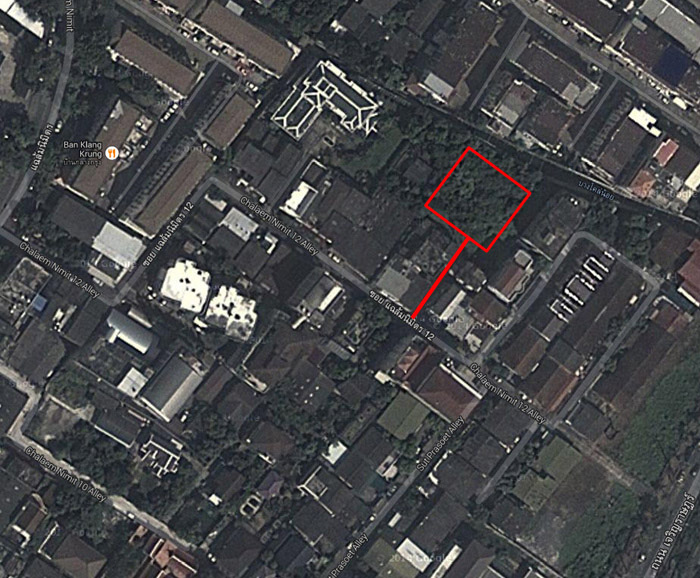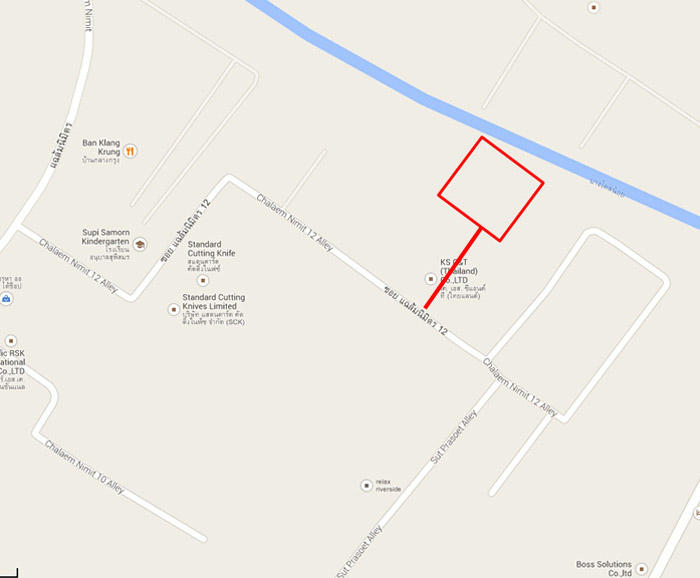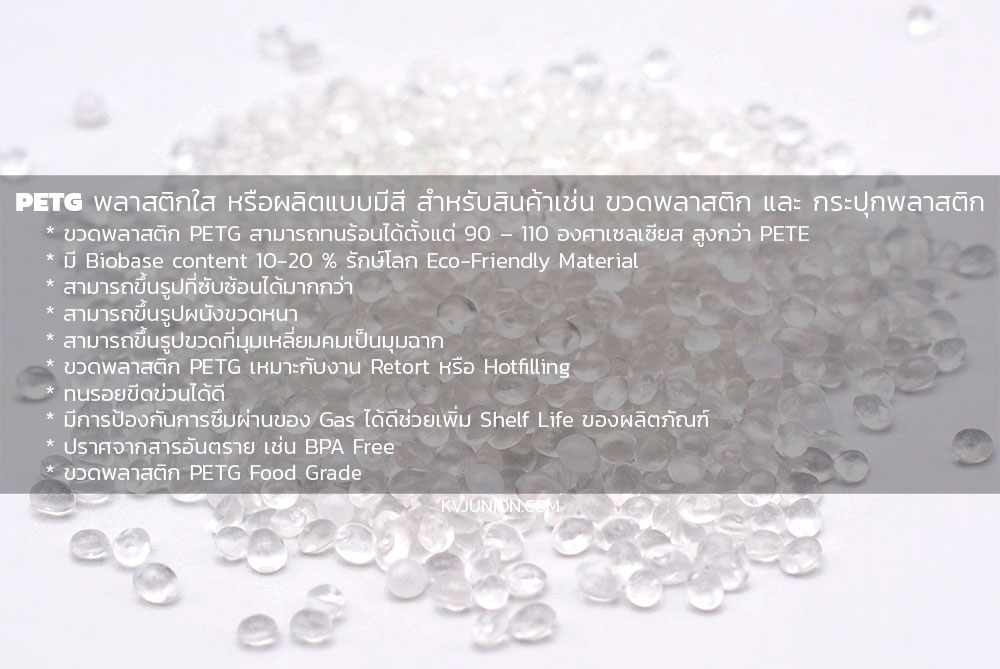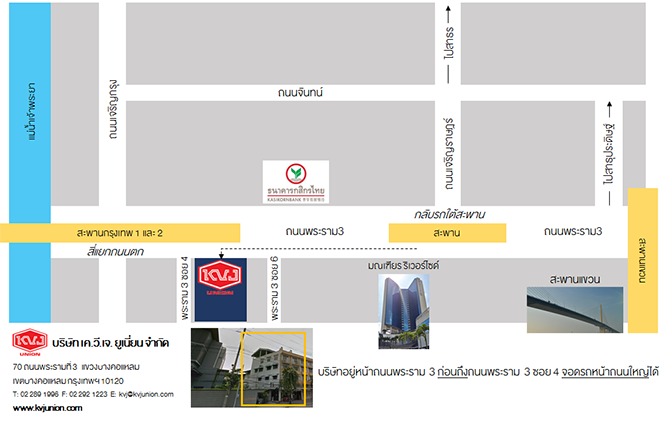หัวสเปรย์คอ 24mm คุณภาพสูง
Posted in: ผลิตภัณฑ์และบริการ
Leave a Comment (0) →Posted in: ผลิตภัณฑ์และบริการ
Leave a Comment (0) →ขายที่ดินติดถนนแฉล้มนิมิตร ใกล้กับถนนเจริญราษฏร์ ใกล้กับถนนพระราม3 และขึ้นทางด่วนได้ ใกล้กับเจริญกรุง ใกล้กับถนนนราธิวาสฯ สาทร



Posted in: Other News
Leave a Comment (0) → G
G
Posted in: ผลิตภัณฑ์และบริการ
Leave a Comment (0) →ฝาพ่นสีทองแบบคุณภาพสูง (Premium Color) และ ผิวมัน (Glossy Surface) กระบวนการผลิตเดียวกันกับชิ้นส่วนอะไหล่รถยนต์
บริษัท เค.วี.เจ. ยูเนี่ยน จำกัด
70 ถนนพระรามที่ 3
แขวงบางคอแหลม
เขตบางคอแหลม
กรุงเทพฯ 10120
T: 02 289 1996
F: 02 292 1223
E: sales@kvjunion.com
LINE: @tul2062b

Posted in: ผลิตภัณฑ์และบริการ
Leave a Comment (0) →บริษัท เค.วี.เจ. ยูเนี่ยน จำกัด
70 ถนนพระรามที่ 3
แขวงบางคอแหลม
เขตบางคอแหลม
กรุงเทพฯ 10120
T: 02 289 1996
F: 02 292 1223
E: sales@kvjunion.com
LINE: @tul2062b

Posted in: ผลิตภัณฑ์และบริการ
Leave a Comment (0) →บริษัท เค.วี.เจ. ยูเนี่ยน จำกัด
70 ถนนพระรามที่ 3
แขวงบางคอแหลม
เขตบางคอแหลม
กรุงเทพฯ 10120
T: 02 289 1996
F: 02 292 1223
E: sales@kvjunion.com
LINE: @tul2062b

Posted in: ผลิตภัณฑ์และบริการ
Leave a Comment (0) →บริษัท เค.วี.เจ. ยูเนี่ยน จำกัด
70 ถนนพระรามที่ 3
แขวงบางคอแหลม
เขตบางคอแหลม
กรุงเทพฯ 10120
T: 02 289 1996
F: 02 292 1223
E: sales@kvjunion.com
LINE: @tul2062b

Posted in: ผลิตภัณฑ์และบริการ
Leave a Comment (0) →บริษัท เค.วี.เจ. ยูเนี่ยน จำกัด
70 ถนนพระรามที่ 3
แขวงบางคอแหลม
เขตบางคอแหลม
กรุงเทพฯ 10120
T: 02 289 1996
F: 02 292 1223
E: sales@kvjunion.com
LINE: @tul2062b

Posted in: ผลิตภัณฑ์และบริการ
Leave a Comment (0) →บริษัท เค.วี.เจ. ยูเนี่ยน จำกัด
70 ถนนพระรามที่ 3
แขวงบางคอแหลม
เขตบางคอแหลม
กรุงเทพฯ 10120
T: 02 289 1996
F: 02 292 1223
E: sales@kvjunion.com
LINE: @tul2062b

Posted in: ผลิตภัณฑ์และบริการ
Leave a Comment (0) →บริษัท เค.วี.เจ. ยูเนี่ยน จำกัด
70 ถนนพระรามที่ 3
แขวงบางคอแหลม
เขตบางคอแหลม
กรุงเทพฯ 10120
T: 02 289 1996
F: 02 292 1223
E: sales@kvjunion.com
LINE: @tul2062b

Posted in: ผลิตภัณฑ์และบริการ
Leave a Comment (0) →บริษัท เค.วี.เจ. ยูเนี่ยน จำกัด
70 ถนนพระรามที่ 3
แขวงบางคอแหลม
เขตบางคอแหลม
กรุงเทพฯ 10120
T: 02 289 1996
F: 02 292 1223
E: sales@kvjunion.com
LINE: @tul2062b

Posted in: ผลิตภัณฑ์และบริการ
Leave a Comment (0) →บริษัท เค.วี.เจ. ยูเนี่ยน จำกัด
70 ถนนพระรามที่ 3
แขวงบางคอแหลม
เขตบางคอแหลม
กรุงเทพฯ 10120
T: 02 289 1996
F: 02 292 1223
E: sales@kvjunion.com
LINE: @tul2062b

Posted in: ผลิตภัณฑ์และบริการ
Leave a Comment (0) →บริษัท เค.วี.เจ. ยูเนี่ยน จำกัด
70 ถนนพระรามที่ 3
แขวงบางคอแหลม
เขตบางคอแหลม
กรุงเทพฯ 10120
T: 02 289 1996
F: 02 292 1223
E: sales@kvjunion.com
LINE: @tul2062b

Posted in: ผลิตภัณฑ์และบริการ
Leave a Comment (0) →บริษัท เค.วี.เจ. ยูเนี่ยน จำกัด
70 ถนนพระรามที่ 3
แขวงบางคอแหลม
เขตบางคอแหลม
กรุงเทพฯ 10120
T: 02 289 1996
F: 02 292 1223
E: sales@kvjunion.com
LINE: @tul2062b

Posted in: ผลิตภัณฑ์และบริการ
Leave a Comment (0) →บริษัท เค.วี.เจ. ยูเนี่ยน จำกัด
70 ถนนพระรามที่ 3
แขวงบางคอแหลม
เขตบางคอแหลม
กรุงเทพฯ 10120
T: 02 289 1996
F: 02 292 1223
E: sales@kvjunion.com
LINE: @tul2062b

Posted in: ผลิตภัณฑ์และบริการ
Leave a Comment (0) →บริษัท เค.วี.เจ. ยูเนี่ยน จำกัด
70 ถนนพระรามที่ 3
แขวงบางคอแหลม
เขตบางคอแหลม
กรุงเทพฯ 10120
T: 02 289 1996
F: 02 292 1223
E: sales@kvjunion.com
LINE: @tul2062b

Posted in: ผลิตภัณฑ์และบริการ
Leave a Comment (0) →บริษัท เค.วี.เจ. ยูเนี่ยน จำกัด
70 ถนนพระรามที่ 3
แขวงบางคอแหลม
เขตบางคอแหลม
กรุงเทพฯ 10120
T: 02 289 1996
F: 02 292 1223
E: sales@kvjunion.com
LINE: @tul2062b

Posted in: ผลิตภัณฑ์และบริการ
Leave a Comment (0) →บริษัท เค.วี.เจ. ยูเนี่ยน จำกัด
70 ถนนพระรามที่ 3
แขวงบางคอแหลม
เขตบางคอแหลม
กรุงเทพฯ 10120
T: 02 289 1996
F: 02 292 1223
E: sales@kvjunion.com
LINE: @tul2062b

Posted in: ผลิตภัณฑ์และบริการ
Leave a Comment (0) →
บริษัท เค.วี.เจ. ยูเนี่ยน จำกัด, พระราม 3, กรุงเทพ
12,000-20,000 บาท ตามประสบการณ์ + โอที
คุณธนะ
Tel : 02-289-1996, 087-092-0088
Fax : 02-292-1223
Web: www.kvjunion.com
Line ID: sirgap
Posted in: Company News
Leave a Comment (0) →บริษัท เค.วี.เจ. ยูเนี่ยน จำกัด
70 ถนนพระรามที่ 3
แขวงบางคอแหลม
เขตบางคอแหลม
กรุงเทพฯ 10120
T: 02 289 1996
F: 02 292 1223
E: sales@kvjunion.com
LINE: @tul2062b

Posted in: ผลิตภัณฑ์และบริการ
Leave a Comment (0) →บริษัท เค.วี.เจ. ยูเนี่ยน จำกัด
70 ถนนพระรามที่ 3
แขวงบางคอแหลม
เขตบางคอแหลม
กรุงเทพฯ 10120
T: 02 289 1996
F: 02 292 1223
E: sales@kvjunion.com
LINE: @tul2062b

Posted in: ผลิตภัณฑ์และบริการ
Leave a Comment (0) →Posted in: ผลิตภัณฑ์และบริการ
Leave a Comment (0) →บริษัท เค.วี.เจ. ยูเนี่ยน จำกัด
70 ถนนพระรามที่ 3
แขวงบางคอแหลม
เขตบางคอแหลม
กรุงเทพฯ 10120
T: 02 289 1996
F: 02 292 1223
E: sales@kvjunion.com
LINE: @tul2062b

Posted in: ผลิตภัณฑ์และบริการ
Leave a Comment (0) →บริษัท เค.วี.เจ. ยูเนี่ยน จำกัด
70 ถนนพระรามที่ 3
แขวงบางคอแหลม
เขตบางคอแหลม
กรุงเทพฯ 10120
T: 02 289 1996
F: 02 292 1223
E: sales@kvjunion.com
LINE: @tul2062b

Posted in: ผลิตภัณฑ์และบริการ
Leave a Comment (0) →บริษัท เค.วี.เจ. ยูเนี่ยน จำกัด
70 ถนนพระรามที่ 3
แขวงบางคอแหลม
เขตบางคอแหลม
กรุงเทพฯ 10120
T: 02 289 1996
F: 02 292 1223
E: sales@kvjunion.com
LINE: @tul2062b

Posted in: ผลิตภัณฑ์และบริการ
Leave a Comment (0) →บริษัท เค.วี.เจ. ยูเนี่ยน จำกัด
70 ถนนพระรามที่ 3
แขวงบางคอแหลม
เขตบางคอแหลม
กรุงเทพฯ 10120
T: 02 289 1996
F: 02 292 1223
E: sales@kvjunion.com
LINE: @tul2062b

Posted in: ผลิตภัณฑ์และบริการ
Leave a Comment (0) →บริษัท เค.วี.เจ. ยูเนี่ยน จำกัด
70 ถนนพระรามที่ 3
แขวงบางคอแหลม
เขตบางคอแหลม
กรุงเทพฯ 10120
T: 02 289 1996
F: 02 292 1223
E: sales@kvjunion.com
LINE: @tul2062b

Posted in: ผลิตภัณฑ์และบริการ
Leave a Comment (0) →วันและเวลาปฏิบัติงาน : จันทร์– เสาร์
อัตราเงินเดือน: 12,000-18,000บาท + สวัสดิการ + ประกันสังคม
Tel : 081-855-1899

Posted in: Company News
Leave a Comment (0) →วันและเวลาปฏิบัติงาน : จันทร์– เสาร์
อัตราเงินเดือน: 12,000-18,000บาท + สวัสดิการ + ประกันสังคม
Tel : 081-855-1899

Posted in: Company News
Leave a Comment (0) →บริษัท เค.วี.เจ. ยูเนี่ยน จำกัด
70 ถนนพระรามที่ 3
แขวงบางคอแหลม
เขตบางคอแหลม
กรุงเทพฯ 10120
T: 02 289 1996
F: 02 292 1223
E: sales@kvjunion.com
LINE: @tul2062b

Posted in: ผลิตภัณฑ์และบริการ
Leave a Comment (0) →บริษัท เค.วี.เจ. ยูเนี่ยน จำกัด
70 ถนนพระรามที่ 3
แขวงบางคอแหลม
เขตบางคอแหลม
กรุงเทพฯ 10120
T: 02 289 1996
F: 02 292 1223
E: sales@kvjunion.com
LINE: @tul2062b

Posted in: ผลิตภัณฑ์และบริการ
Leave a Comment (0) →บริษัท เค.วี.เจ. ยูเนี่ยน จำกัด
70 ถนนพระรามที่ 3
แขวงบางคอแหลม
เขตบางคอแหลม
กรุงเทพฯ 10120
T: 02 289 1996
F: 02 292 1223
E: sales@kvjunion.com
LINE: @tul2062b

Posted in: ผลิตภัณฑ์และบริการ
Leave a Comment (0) →